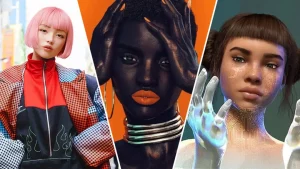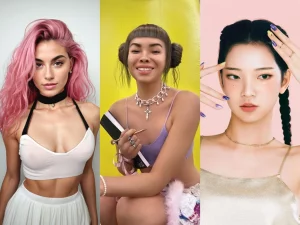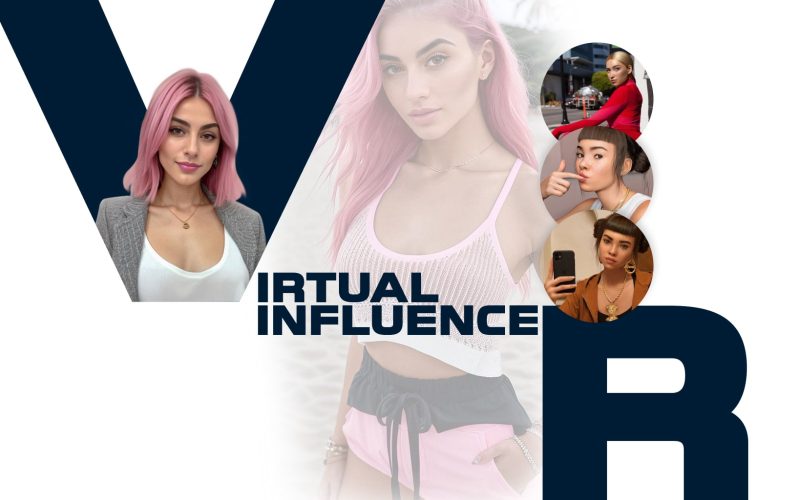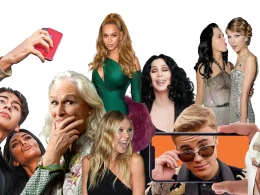Introduction
In recent years, the entertainment industry has witnessed a revolutionary shift with the rise of virtual influencers. These computer-generated personas, powered by sophisticated artificial intelligence and cutting-edge graphics, have carved out a significant niche in the digital landscape. Unlike traditional influencers, virtual influencers are not bound by the limitations of human existence, allowing them to maintain a flawless, consistent presence online. This article delves into the phenomenon of virtual influencers, exploring their growth, impact, and future potential within the entertainment industry.
What Are Virtual Influencers?

Virtual influencers are digital characters created using computer graphics and artificial intelligence. They are designed to mimic real-life human beings, often possessing unique personalities, backstories, and social media profiles. These virtual personas interact with their audience through platforms like Instagram, TikTok, and YouTube, just like human influencers do. However, the key difference lies in their creation and management, which is entirely in the hands of their developers.
The Genesis of Virtual Influencers

The concept of virtual influencers can be traced back to the early 2000s with the creation of virtual pop stars like Hatsune Miku in Japan. However, the true rise of virtual influencers began in the mid-2010s with the advent of advanced AI and CGI technologies. One of the most notable early examples is Lil Miquela, a virtual influencer created by the company Brud. Lil Miquela quickly gained a massive following on Instagram, collaborating with major brands and even releasing music.
The Technology Behind Virtual Influencers

The creation of virtual influencers involves a combination of several advanced technologies:
-
Computer Graphics
High-quality computer graphics are essential for creating lifelike virtual influencers. These graphics are often developed using software like Blender, Maya, and Unreal Engine. The goal is to create a visually appealing and realistic character that can seamlessly integrate into various digital environments.
-
Artificial Intelligence
AI plays a crucial role in managing the interactions and behaviors of virtual influencers. Natural language processing (NLP) allows these digital personas to engage in meaningful conversations with their audience, while machine learning algorithms help them adapt and evolve based on user interactions.
-
Motion Capture
For virtual influencers that require lifelike movements, motion capture technology is employed. This involves recording the movements of real actors and translating them into digital animations. This technology ensures that virtual influencers can move and express themselves in a natural and convincing manner.
The Appeal of Virtual Influencers

-
Consistency
One of the primary advantages of virtual influencers is their ability to maintain a consistent online presence. Unlike human influencers, who may face personal issues or require breaks, virtual influencers can be active 24/7. This consistency is highly appealing to brands looking for reliable partners for their marketing campaigns.
-
Creative Control
Virtual influencers offer unparalleled creative control. Their creators can design every aspect of their appearance, personality, and behavior. This level of control allows for precise alignment with brand values and messaging, making virtual influencers ideal for targeted marketing.
-
Immortality
Virtual influencers do not age, fall ill, or face the risk of scandals. This immortality ensures that they can maintain their appeal and relevance over extended periods, providing long-term value to brands and audiences alike.
-
Global Reach
Virtual influencers can transcend geographical boundaries with ease. They can interact with audiences from different cultures and languages, making them highly versatile and adaptable for global marketing campaigns.
The Impact on the Entertainment Industry

-
Brand Collaborations
Virtual influencers have become sought-after partners for brand collaborations. Major companies, including fashion giants like Gucci and Prada, have collaborated with virtual influencers to promote their products. These collaborations often result in visually stunning and highly shareable content that resonates with audiences.
-
Music and Entertainment
Virtual influencers are not limited to social media. Some have ventured into the music industry, releasing singles and albums. For example, Lil Miquela has released several songs and music videos, garnering millions of views on YouTube. Virtual influencers can also participate in virtual concerts and events, providing unique entertainment experiences.
-
Film and Television
The potential of virtual influencers extends to film and television. With advancements in CGI and AI, virtual influencers can star in movies and TV shows, offering a new form of storytelling. This opens up possibilities for entirely digital productions with virtual characters as the main protagonists.
-
Gaming
The gaming industry has also embraced virtual influencers. Some virtual influencers are designed as characters within video games, while others promote gaming products and events. Their presence in the gaming world adds an extra layer of engagement for players.
Challenges and Ethical Considerations

-
Authenticity
One of the primary challenges facing virtual influencers is the question of authenticity. Audiences may struggle to connect with digital personas on the same level as human influencers. Building genuine trust and emotional connections with followers can be more challenging for virtual influencers.
-
Transparency
Transparency is crucial when it comes to virtual influencers. Audiences should be aware that they are interacting with a digital creation rather than a real person. Clear disclosure is essential to maintain trust and avoid misleading consumers.
-
Ethical Concerns
The rise of virtual influencers also raises ethical concerns. Issues such as data privacy, the potential for manipulation, and the impact on human influencers’ livelihoods need to be carefully considered. Striking a balance between innovation and ethical responsibility is essential for the sustainable growth of virtual influencers.
The Future of Virtual Influencers

The future of virtual influencers looks promising, with several exciting developments on the horizon:
-
Enhanced Realism
As technology continues to advance, virtual influencers will become even more realistic. Improved AI, graphics, and motion capture techniques will result in digital personas that are nearly indistinguishable from real humans.
-
Expanded Roles
Virtual influencers will likely take on more diverse roles within the entertainment industry. They may become virtual actors, hosts, and even directors, contributing to a wide range of creative projects.
-
Personalized Experiences
AI-driven personalization will enable virtual influencers to offer tailored experiences to individual users. This could include personalized content, recommendations, and interactions, enhancing the overall user experience.
-
Integration with Augmented Reality (AR) and Virtual Reality (VR)
The integration of virtual influencers with AR and VR technologies will create immersive and interactive experiences. Users will be able to interact with virtual influencers in virtual environments, blurring the lines between reality and the digital world.
Conclusion
The growth of virtual influencers in the entertainment industry represents a fascinating convergence of technology and creativity. These digital personas offer unique advantages, from consistency and creative control to global reach and immortality. While challenges and ethical considerations exist, the potential for virtual influencers to reshape the entertainment landscape is undeniable. As technology continues to evolve, virtual influencers are poised to play an increasingly prominent role in the world of entertainment, captivating audiences and redefining the boundaries of digital engagement.











